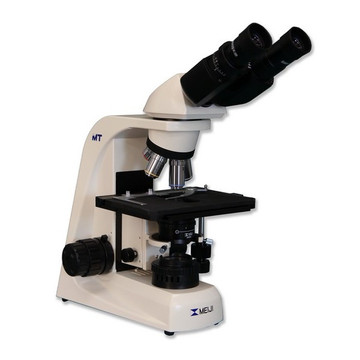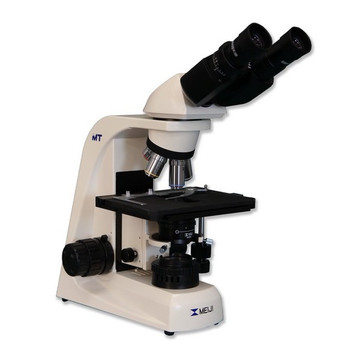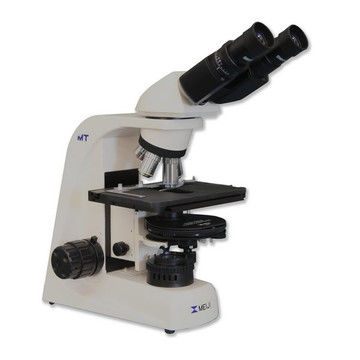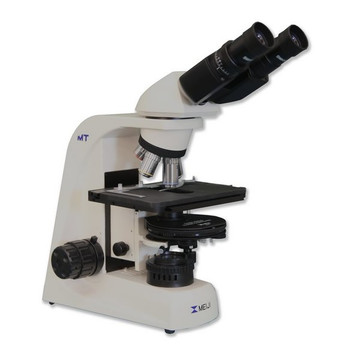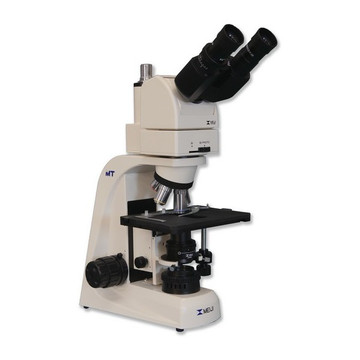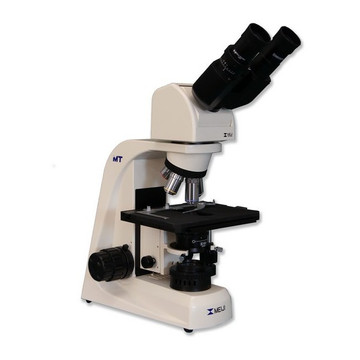
Shop Deals on Microscopes
A compound microscope uses multiple lenses, namely the objective lens and the eyepiece (ocular) lens, to magnify static 2D samples. These lenses allow the compound microscope user to observe a large amount of detail in the samples. They are typically simple to use, feature their light source, and are convenient to set up. Our compound microscopes for sale are also lightweight, making them easy to store.
Learn more about compound microscopes.
See a comparison of stereo vs. compound microscopes.
Compound Microscope Parts
The main parts of a compound microscope are:
- Eyepiece (ocular lens)
- Objective Lens
- Mechanical Stage
- Condenser
- Illumination
See a fully labeled diagram of the parts of a compound microscope.
Check out our selection of accessories and parts.
How to use a Compound Microscope
See our full guide on how to use a microscope.
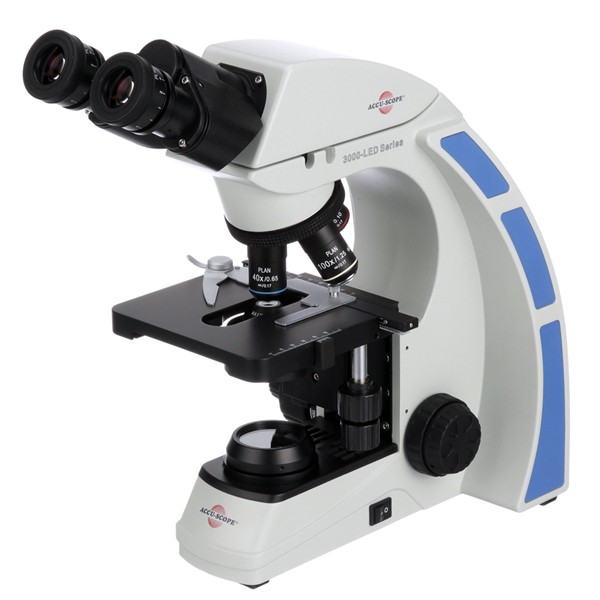
Why Choose a Compound Microscope
Our compound microscopes are very simple to use and convenient to set up. They are relatively small and easy to store. Our compound microscopes also come with their own light source. Because they use multiple lenses, they're also able to reveal great detail in the sample you're observing.
Types of Compound Microscopes Explained
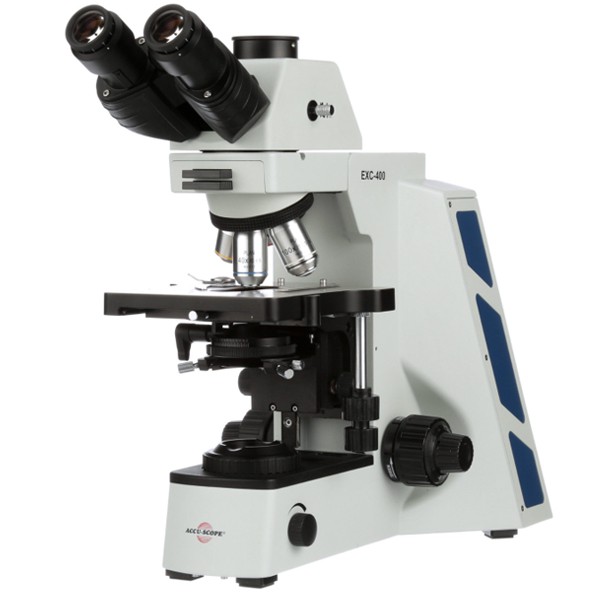
Biological and Clinical Microscopes for Examining Cell Structures
Biological microscopes and clinical microscopes are commonly used for biological applications that include high magnification of internal cell structures, such as:
- Plant
- Animal
- Human tissue
- Blood
These compound microscopes are designed to fulfill the requirements of laboratories and educational sectors.
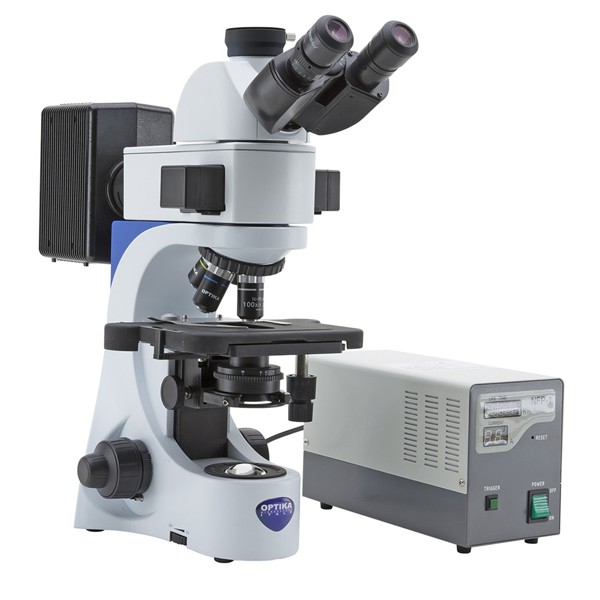
Phase Contrast, Fluorescence, Polarizing Microscopes for Medical Research and Life Sciences
Phase contrast microscopes, fluorescence microscopes, and polarizing microscopes are valuable tools in:
- Medical research
- Biotechnology testing
- Life science
- Various routine laboratory applications
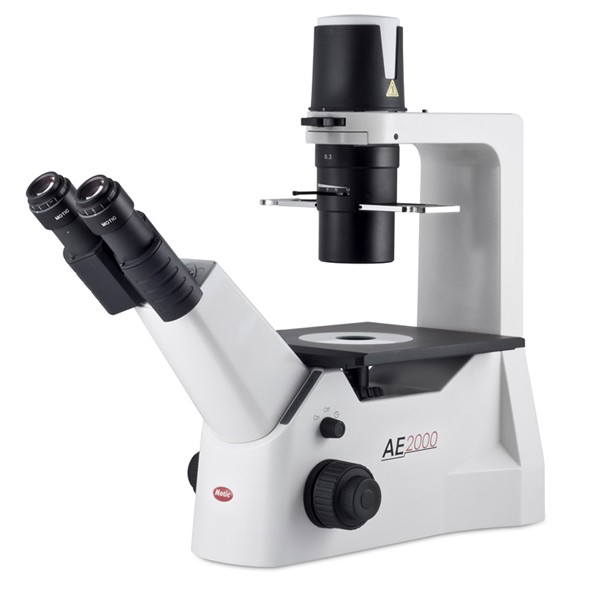
Inverted and Metallurgical Microscopes for the Metallurgy, Textiles, and Composites Industries
Inverted microscopes and metallurgical microscopes are the ideal solutions for:
- Industrial inspection
- Material science
- Metallurgy
- Fabrics/textiles
- Wafers
- Composites

Teaching Microscopes for Simultaneous Observation
Our teaching microscopes offer user-friendly operation and durability required for teaching and training students, particularly in the medical field. These compound microscopes are available in configurations of up to ten heads, to allow for simultaneous observation.
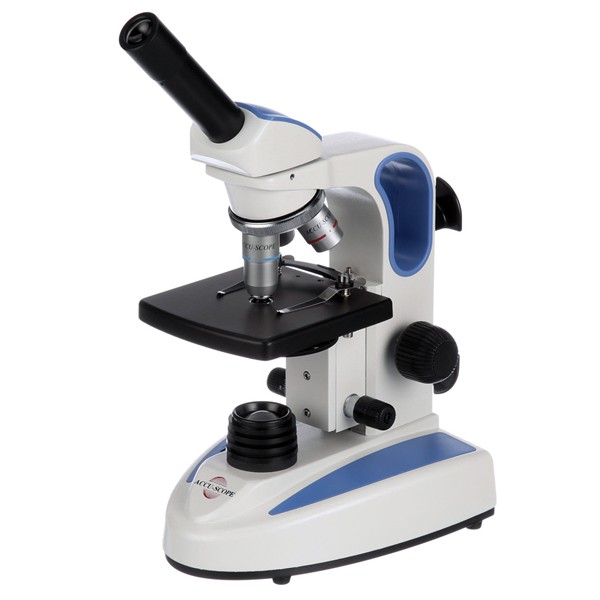
Student Microscopes for Better Studies
Our student microscopes are a great choice if you are just starting your journey towards scientific discovery and/or are looking for an affordable compound microscope. Monocular microscopes make for a great tool to enhance your studies as they are durable and easy on your budget.
Compound Microscope Price
At the low end, our student compound microscopes can start from as little as $69, but if you require more features and a more complicated setup, the top-end compound microscopes cost upwards of $19,236.
Best Compound Microscopes
A few of our best-selling compound microscopes include:
- ACCU-SCOPE 3000-LED Binocular Biological Microscope, 1000x Magnification: An ideal choice for universities, laboratories, doctors' offices, veterinarians, and life science professionals.
- UNITRON 12100 Binocular Polarizing Microscope: An excellent choice for university and industrial applications for the examination of birefringent materials for geology, petrography, crystallography, and material sciences.
- OPTIKA B-150P-BRPL Binocular LED Polarizing Microscope, N-Plan Objectives, Rechargeable: Designed to fulfill all requirements of educational laboratories. It's one of your best choices if a cordless microscope is needed.
- Labomed Lx300 Binocular LED Microscope: Spawned from a call by educators for a high-value classroom and pre-clinical microscope that is ideal for continuing education programs.
- Meiji MT-93L LED Binocular Entry Level Polarizing Microscope: Best buy for a student polarizing microscope that is portable, affordable, and built to last year after year.
Best Budget Compound Microscope for Home and Casual Use
The ACCU-SCOPE EXM-150 Cordless Microscope is an affordable compound microscope with excellent features. It has quality optics, a mechanical stage, and an iris diaphragm to adjust light settings. The rechargeable LED illumination allows you to operate it anywhere you like (up to four hours of use). The EXM-150 is an ideal choice for home use and K-12 students.
Best Quality High-Powered Compound Microscope
For advanced applications, Meiji Techno offers best-in-class compound microscopes for sale, like the Meiji MT4200L Binocular Biological Microscope. This microscope provides high optical performance for researchers and laboratory specialists. It has an ergonomic design for maximum comfort, durable finish, and high-efficiency LED. This Meiji Techno compound microscope is made in Japan and has a limited lifetime warranty.
Best Compound Microscope for Live Video
The OPTIKA B-190TBPL Digital Microscope with 10.1 inch Tablet consists of innovative and high-quality components. The detachable tablet is rotatable and allows for demonstrations, image capture, and video. The compound microscope has outstanding high-contrast optics and LED with intensity control.
Compound Microscope FAQ’s
Here are some common questions you may also have when buying a compound microscope:
What is a Compound Microscope?
This type of microscope is used when you want to view magnified specimens on glass slides. Compound microscopes can have higher magnification abilities than stereo microscopes because they use two or more lenses. Our compound microscopes for sale are available in multi-head, binocular, and trinocular options.
What is Fluorescence Microscopy?
Our fluorescence microscopes are used to study both inorganic and organic specimens. Fluorescence microscopy images are ideal for complex samples that require fluorescent lighting. These compound microscopes use a combination of fluorescence and phosphorescence to allow users to examine the samples.
Why is it called a compound microscope?
It's called a compound microscope because it uses a compound lens system. The objective lens provides the main magnification, which is then compounded (multiplied) by the ocular lens in the eyepiece.
What is the maximum magnification of a compound light microscope?
The maximum magnification of a compound microscope is roughly 1000x. This is a result of a maximum ocular magnification of 10x and a maximum objective lens magnification of 100x. Typical magnification ranges between 40x and 1000x to create two-dimensional images with a compound light microscope.
How many lenses does a compound microscope have?
A compound microscope typically contains two lenses, the ocular lens in the eyepiece, and the objective lens. The ocular lens has a larger focal length and can enlarge the image. The objective lens is located in the nosepiece and has a shorter focal length which allows you to get a closer view of the sample.
How does a compound microscope differ from a simple microscope?
A simple microscope uses a lens (or set of lenses) to enlarge the sample using angular magnification, which is a similar function to a magnifying glass. A compound microscope uses two different lenses. One is the objective lens that enlarges the sample, and one is the ocular lens that magnifies the image, allowing for much higher magnification.
Custom Quotations on Compound Microscopes for Sale
Let our experts create a custom quote just for you with our best pricing and terms on compound microscopes. Simply tell us your requirements, and we'll do the rest.
If you need product advice, technical support, or to enquire about quantity discounts, feel free to contact us by email or call us at (877) 877-7274.
New York Microscope Company is the only microscope company to offer a Free Service Protection Guarantee with the purchase of every compound microscope. Visit our Free Service Protection page for more details.


